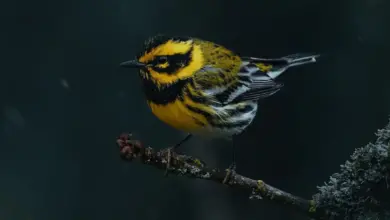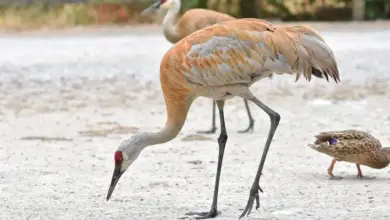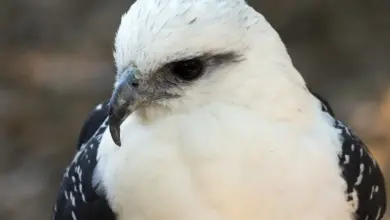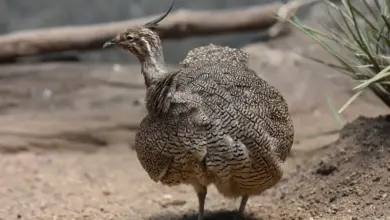The Black-rumped Waxbill (Estrilda troglodytes) is a small passerine bird that is native to sub-Saharan Africa. It is a highly social and gregarious species that is commonly found in flocks. The Black-rumped Waxbill gets its name from its distinctive black rump, which contrasts sharply with its otherwise pale plumage. It is sometimes also known as the Black-tailed Waxbill.
This waxbill inhabits savannah and open woodland habitats. It builds domed nests in trees and dense bushes and feeds predominantly on grass seeds. The Black-rumped Waxbill is a resilient species that adapts well to degraded habitats and agricultural areas. However, it faces threats from trapping for the caged bird trade and habitat loss.

Physical Description
The Black-rumped Waxbill is a very small finch-like bird that averages 11–12 cm in length and weighs between 6–13 grams. Its plumage is mostly pale brownish-gray, with a light gray head, white underparts, and bright red eyes and beak.
As the name suggests, it has a prominent black rump that stands out sharply against its pale plumage. The black extends onto the upper tail coverts but does not reach the tail itself, which is white-tipped brown.
Males and females look alike, although females tend to have slightly duller plumage. Juveniles lack the black rump, and their plumage is duller overall with streaked underparts. After their first molt, they acquire adult plumage.
In flight, white edging can be seen on the wings. The legs are pinkish-brown. Overall, the Black-rumped Waxbill has an active and acrobatic flight pattern. The wings make a distinct whirring sound.
Distribution and Habitat
The Black-rumped Waxbill has a wide distribution range across sub-Saharan Africa. Its range stretches from Senegal and Gambia in the west to Ethiopia in the east and southwards to northern South Africa.
It inhabits open grasslands, cultivated areas, savannahs, and open woodlands up to 2000 meters above sea level. They are particularly numerous on the floodplains of the Zambezi River system.
The Black-rumped Waxbill adapts readily to degraded habitats around human settlements. It avoids denser forest and desert regions.
Behavior and Ecology
The Black-rumped Waxbill is a highly gregarious species, usually found in small parties or large flocks of 10 to 100 or more birds. They are constantly on the move, flying swiftly between bushes and trees while foraging. They are active and acrobatic flyers despite their tiny size.
Flocks maintain contact through constant chattering and twittering calls. These lively and vocal interactions help maintain group cohesion. Their calls include metallic twitters, trills, and soft warbling sounds.
This waxbill feeds predominantly on grass seeds that it picks off the ground or from seed heads. It also consumes some insects and other small invertebrates, especially during the breeding season, to meet the protein requirements of chicks.
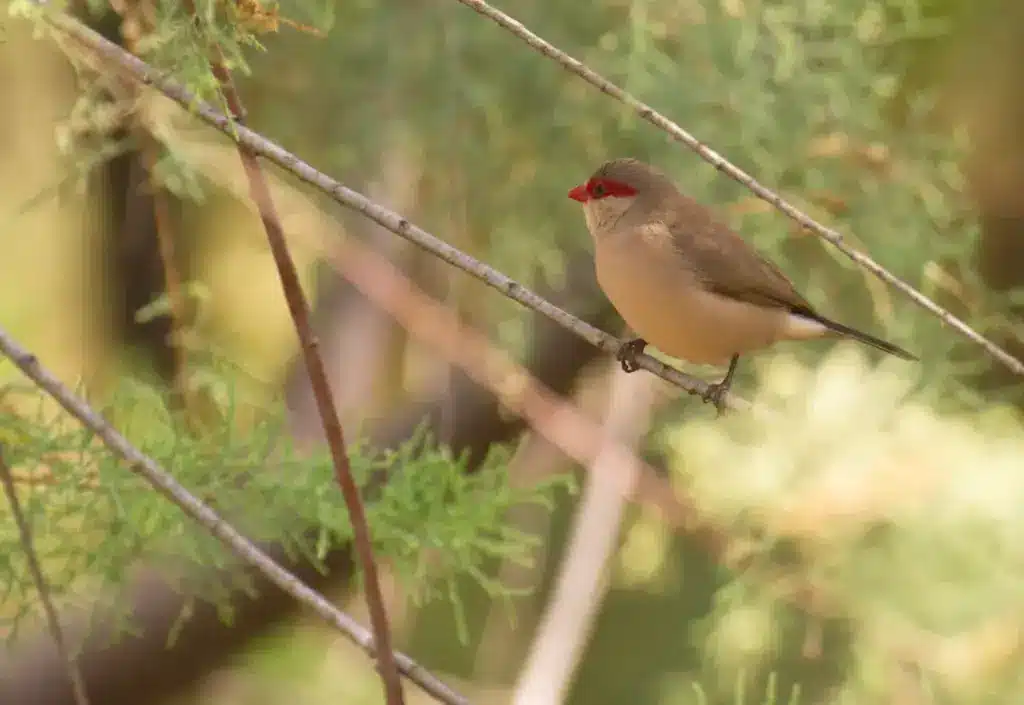
Breeding
The Black-rumped Waxbill breeds during the wet season, which varies across its range. The male displays to the female by hopping stiffly with wing fluttering and fanning his tail. If she is receptive, he leads the female to a potential nest site.
The nest is a domed structure built 3-5 meters off the ground in a tree or dense bush. It has an entrance hole on the side. The outside is made of grass stems, and the inside is lined with softer material like feathers. It is constructed mostly by the female while the male stands guard.
A clutch contains 4-8 white eggs, which are incubated by both parents for 13-14 days until hatching. The chicks fledge in about 3 weeks. Parents may raise 2-3 broods in a season.
Roosting
Black-rumped Waxbills roost communally in thick bushes or reedbeds. They exhibit two types of roosting behavior:
- Night-roosting: Entire flocks gather at dusk and settle into dense vegetation to spend the night.
- Day-roosting: Outside of the breeding season, some flocks spend their inactive midday periods roosting in shady spots.
Roost sites are used repeatedly and provide protection from predators. Several hundred birds may gather at larger roost sites.
Relationship with Humans
The attractive coloration and social nature of Black-rumped Waxbills make them popular as cage birds. They have been trapped extensively across parts of Africa for the pet bird trade. Habitat loss due to agricultural expansion has also affected some populations.
However, this species remains widespread and fairly common over most of its range. It likely benefits from some habitat alteration and cultivation, which creates additional grassland areas. Flocks readily visit gardens and agricultural fields.
Overall, the Black-rumped Waxbill is currently evaluated as a species of Least Concern on the IUCN Red List. However, continued trapping pressure is a threat, and conservation measures may be needed to monitor and regulate the bird trade in this species. Maintaining grassland habitats will also be important for its long-term preservation.
Interesting Facts
- Flocks of Black-rumped Waxbills sometimes mix with other estrildid finches like the Common Waxbill and Black-crowned Waxbill while foraging and roosting.
- The name “waxbill” refers to the bright red beaks of these birds which resemble drops of sealing wax.
- They build remarkably sturdy nests that are able to withstand bad weather and persist for many years. Nests are often reused by future generations.
- Black-rumped Waxbills have a commensal relationship with buffalo and cattle egrets. The egrets allow waxbill flocks to forage close by to stir up insects for them to catch.
- These birds have a fascinating day-roosting behavior where non-breeding flocks spend up to 9 hours resting in shady vegetation to avoid the midday heat.
- Their genus name Estrilda comes from an Old French word for a small bird, “estournelle”.
- In some parts of Africa, they are considered a pest species due to their flocking behavior and the damage they can do to cereal crops.
The Black-rumped Waxbill is a delightful little finch that brightens up grasslands and savannah across sub-Saharan Africa with its energy and colorful plumage. Despite facing some threats, it remains widespread and adaptable to human activities across most of its wide range.
Conservation Status
The Black-rumped Waxbill is currently classified as Least Concern on the IUCN Red List of Threatened Species. It has an extremely large global range estimated at over 6 million square kilometers. The total population size has not been quantified but is presumed to be large based on the widespread distribution.
However, there are some localized threats that require monitoring. Trapping for the caged bird trade may impact some populations. The species is one of the most commonly sold estrildid finches in African markets. Habitat loss due to agricultural expansion and grazing pressure are ongoing threats.
On the positive side, the Black-rumped Waxbill adapts well to degraded habitats around human activity. Their resilience suggests they can persist despite some level of habitat alteration and may even benefit from additional grasslands. However, more research is needed to estimate the impact of trapping and habitat changes across their range.
Conclusion
The Black-rumped Waxbill is a fascinating and adaptable small finch endemic to Africa. It exhibits interesting behaviors like communal roosting and benefits other species like cattle egrets through their foraging associations.
While not currently threatened, monitoring will be needed in the future to ensure this lively and colorful bird remains common across its wide range and delights observers with its energetic presence. Conservation strategies are needed to protect them.


